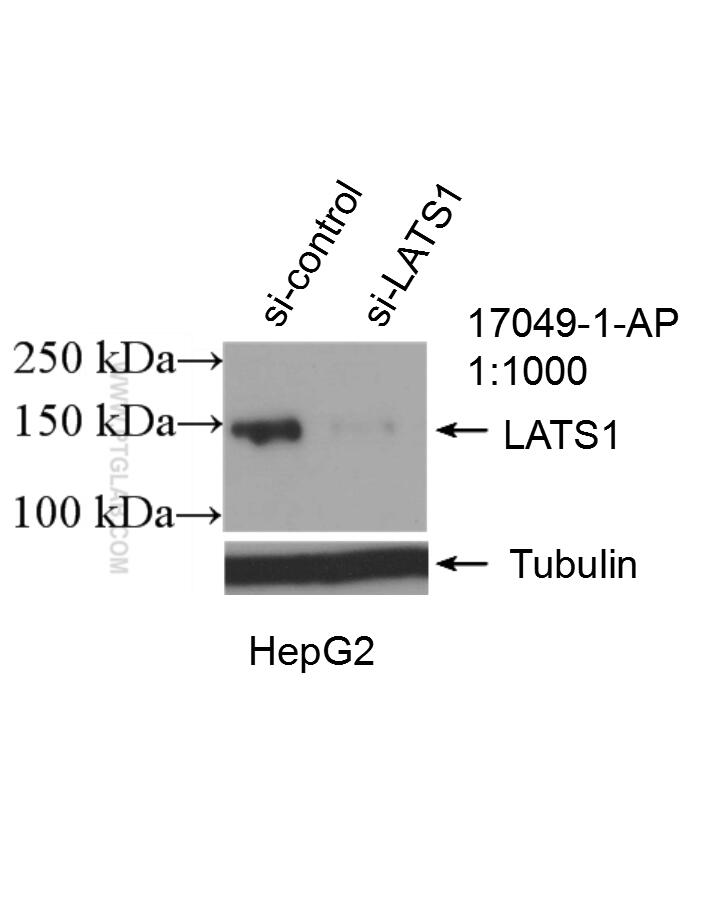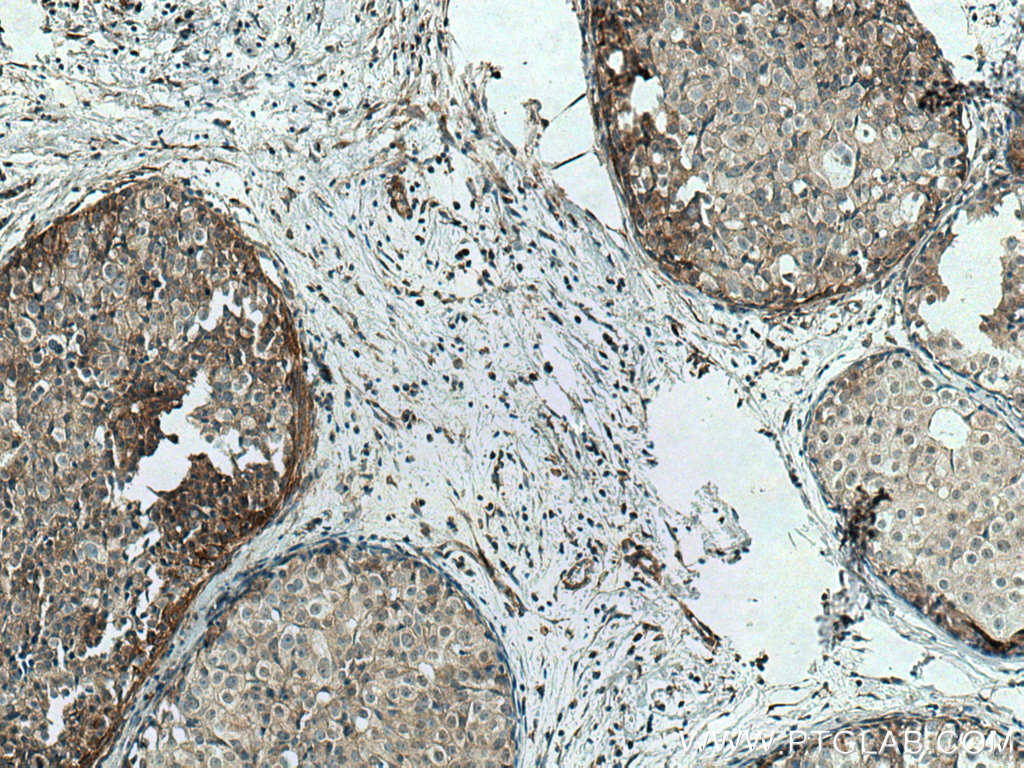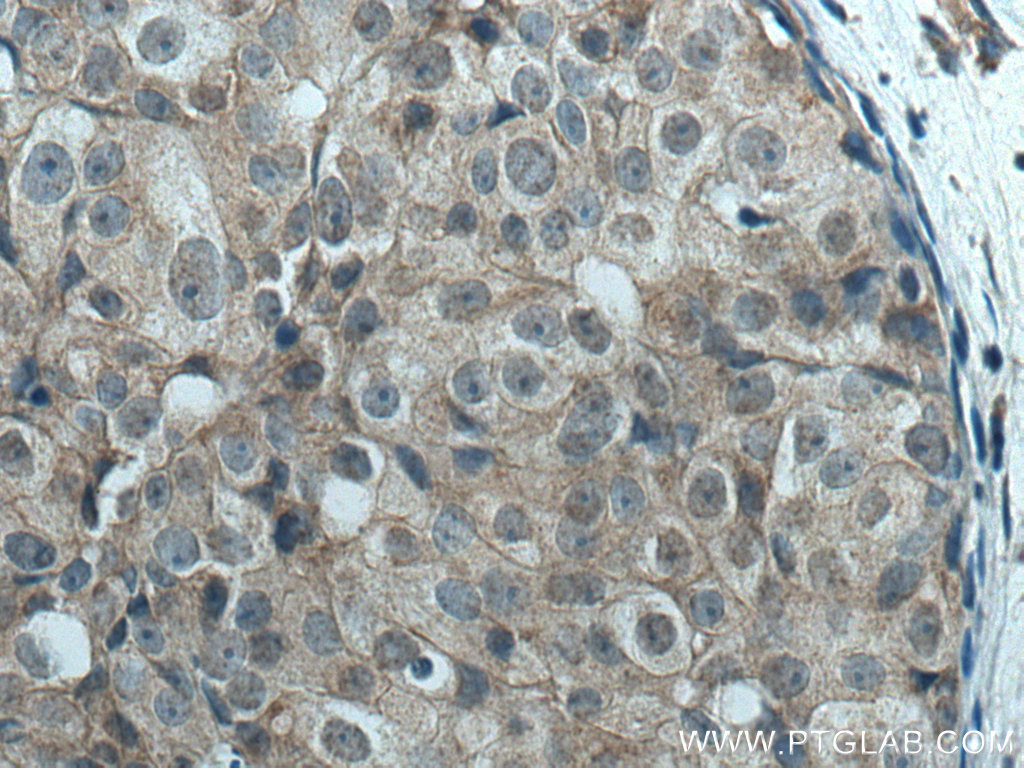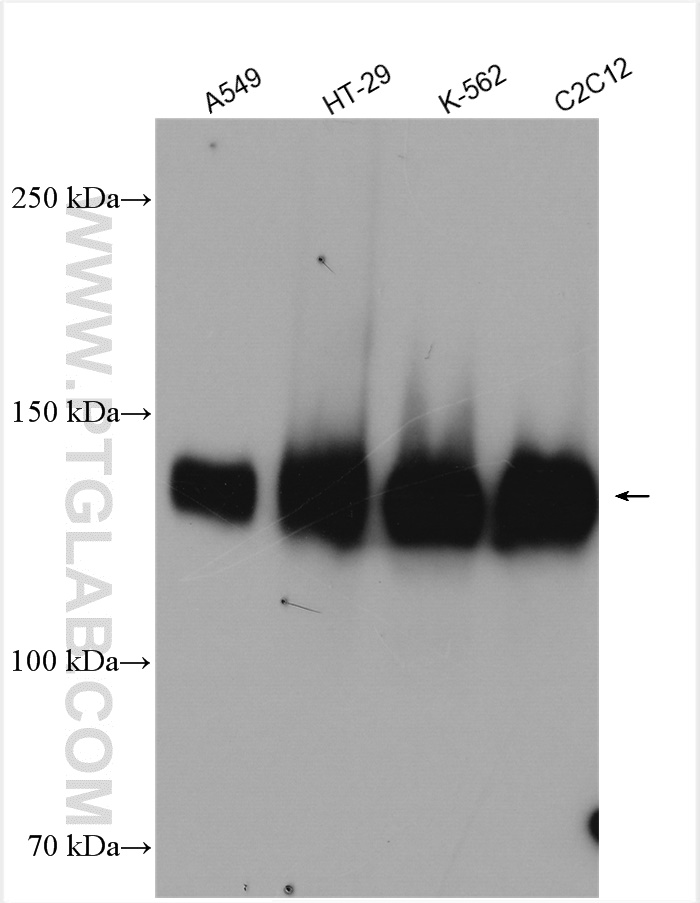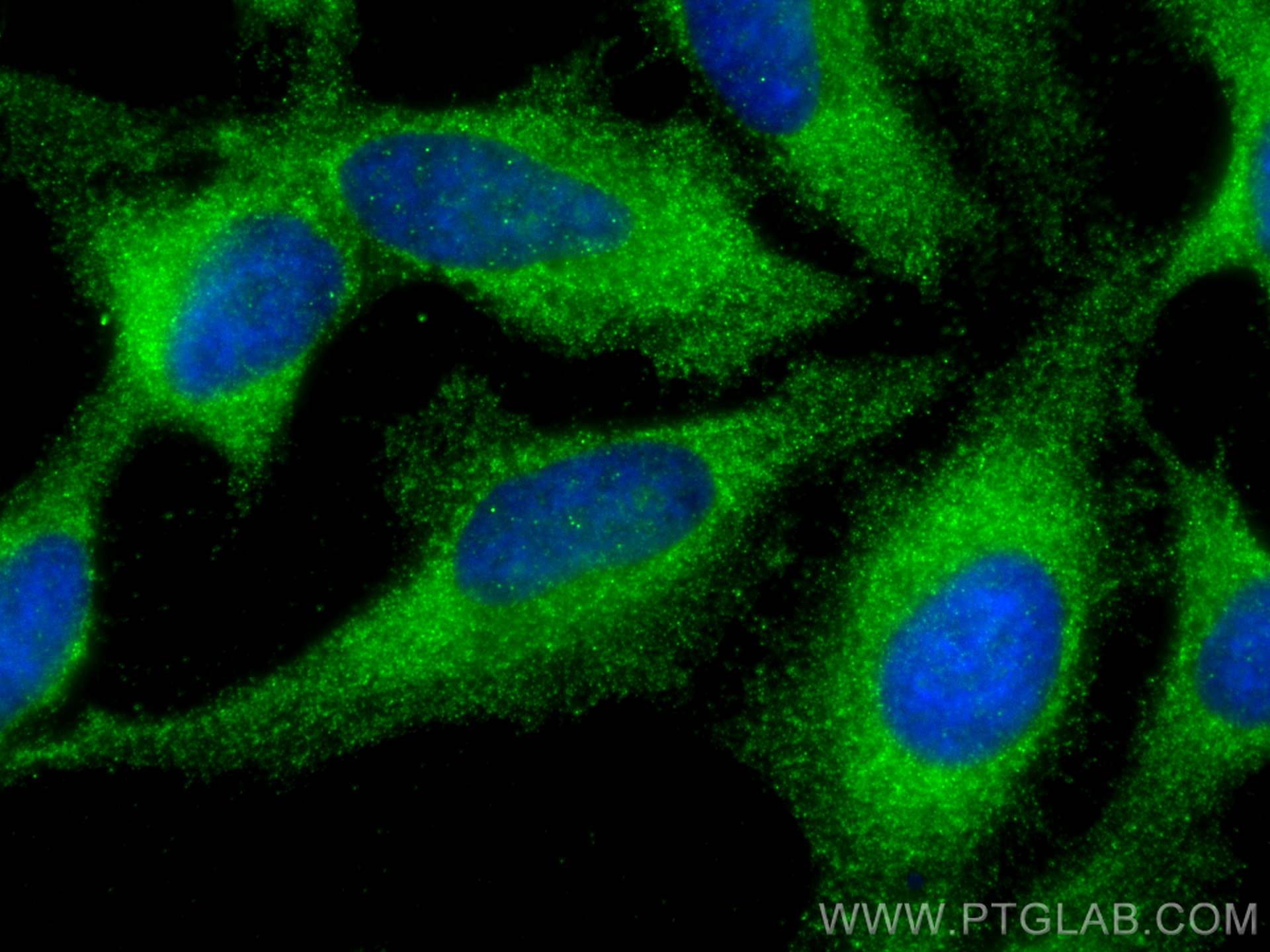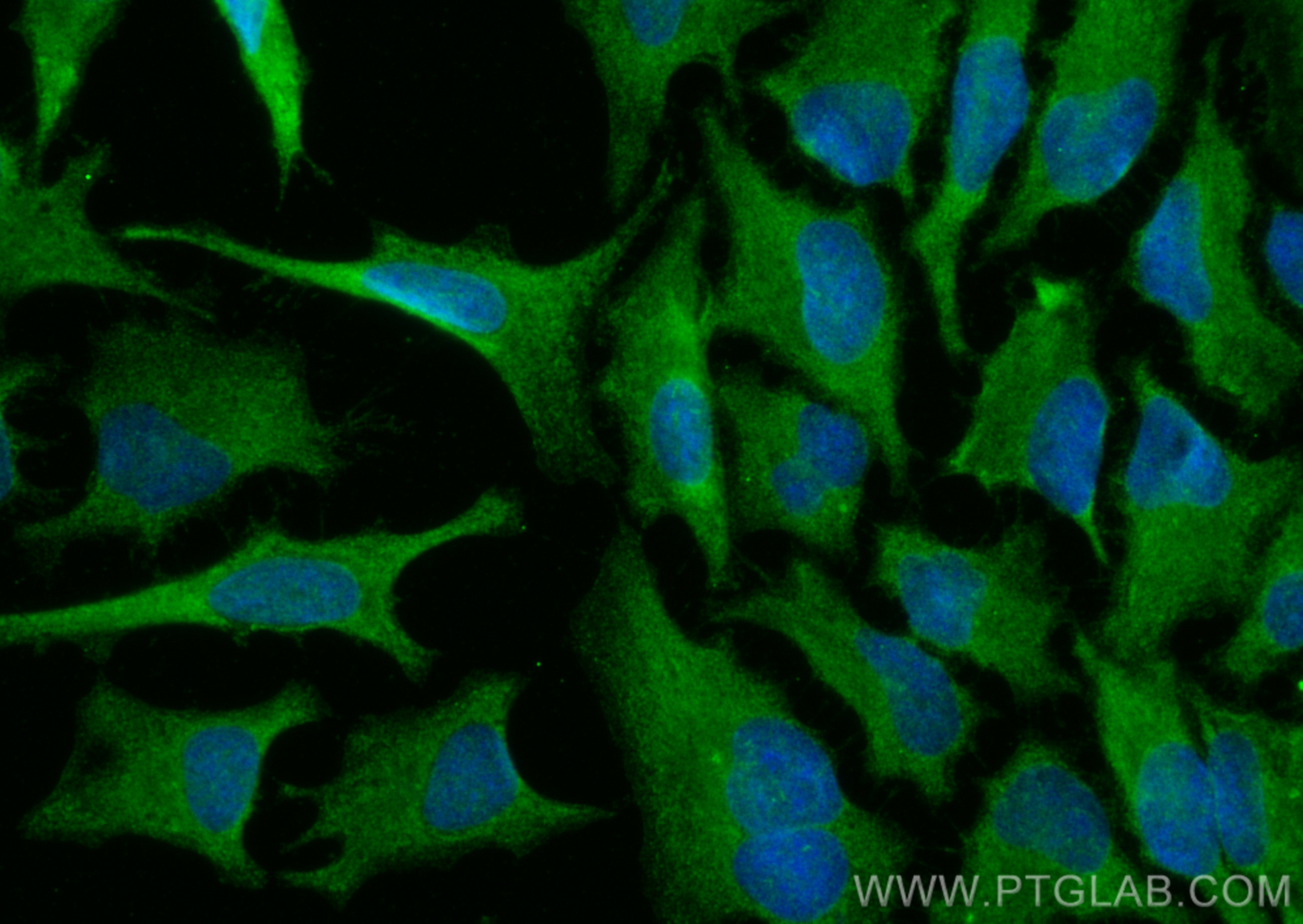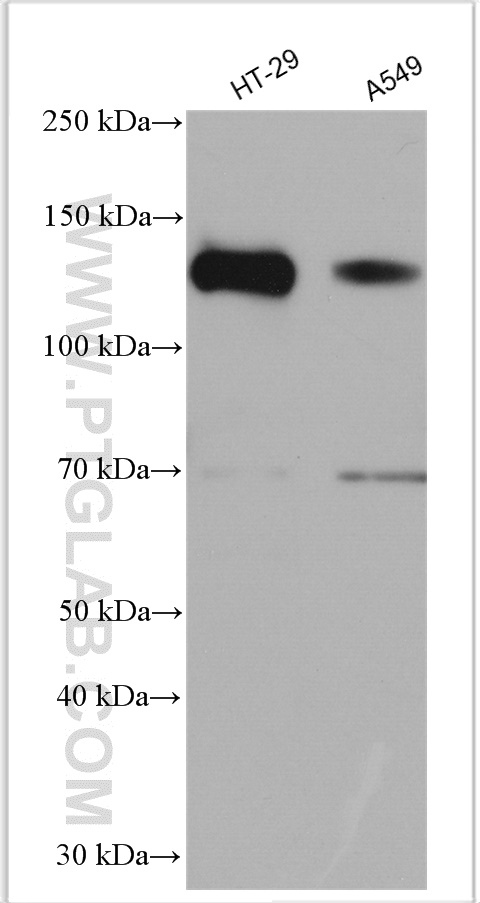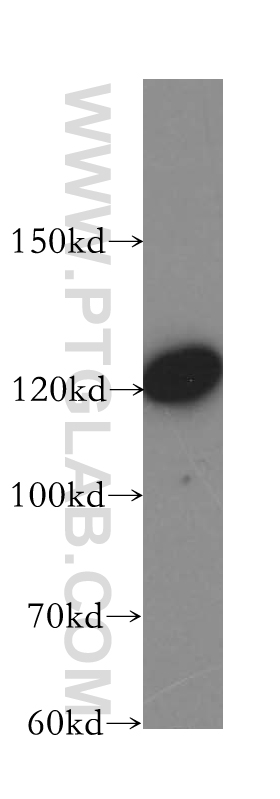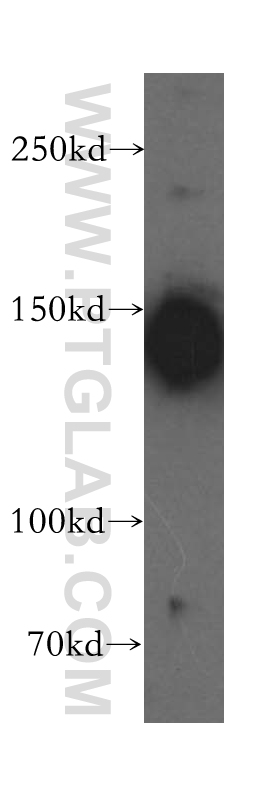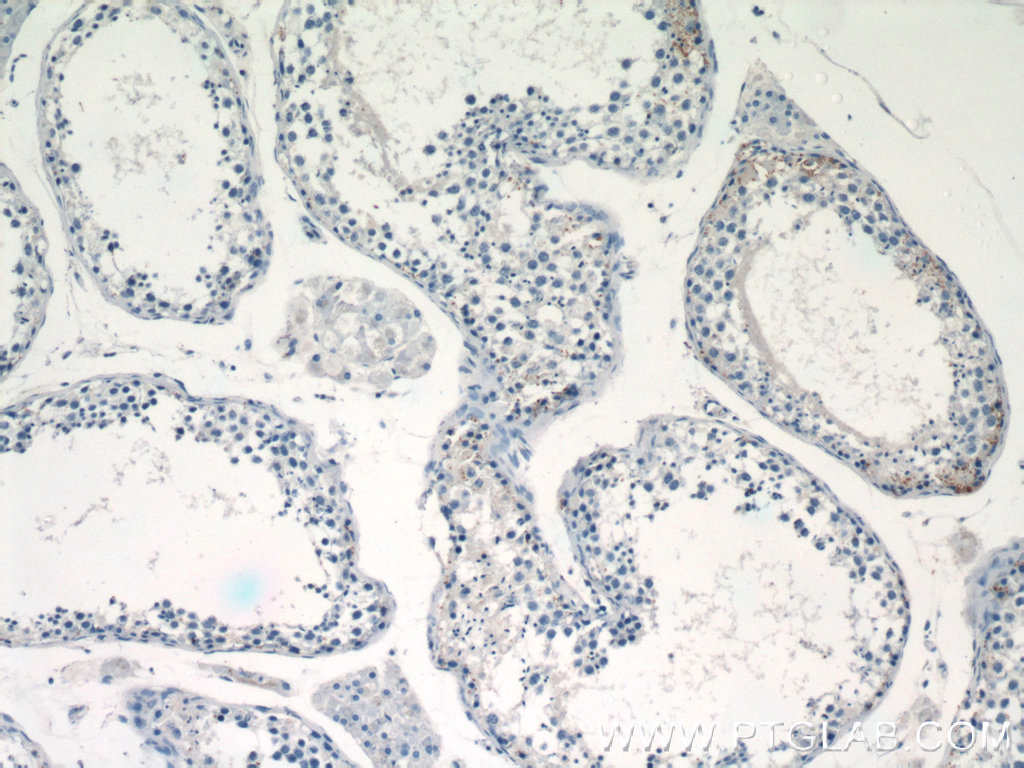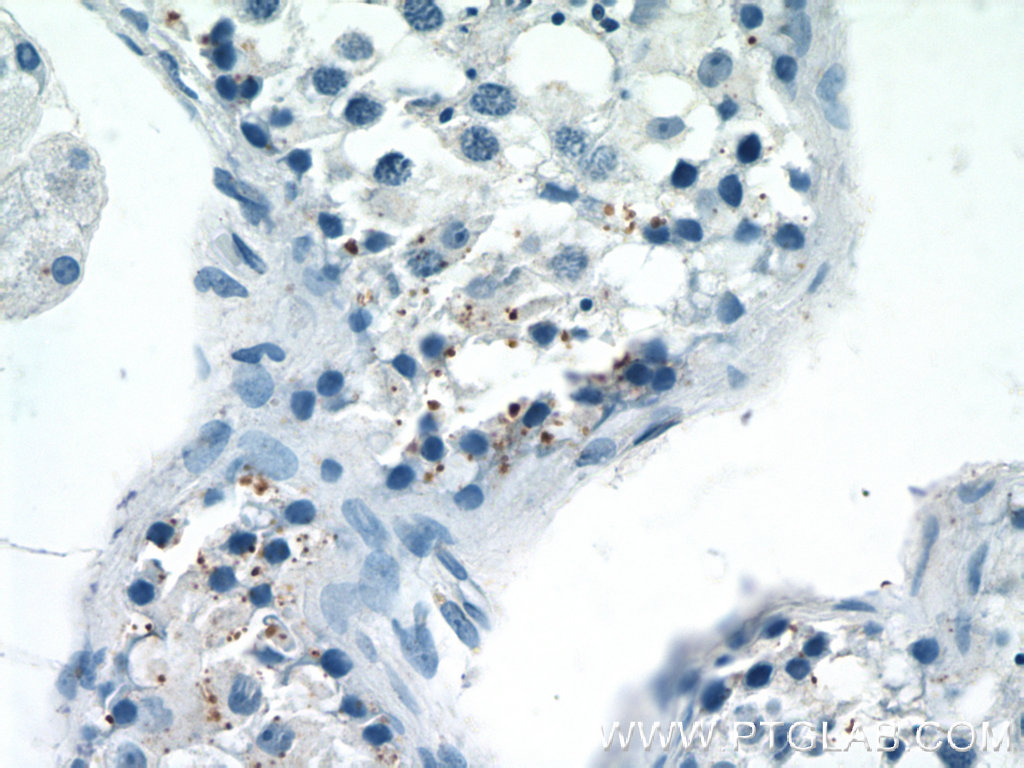验证数据展示
经过测试的应用
| Positive WB detected in | HepG2 cells, K-562 cells, SH-SY5Y cells, HT-29 cells, A549 cells, C2C12 cells |
| Positive IHC detected in | human breast cancer tissue, human testis tissue Note: suggested antigen retrieval with TE buffer pH 9.0; (*) Alternatively, antigen retrieval may be performed with citrate buffer pH 6.0 |
| Positive IF/ICC detected in | HeLa cells |
推荐稀释比
| 应用 | 推荐稀释比 |
|---|---|
| Western Blot (WB) | WB : 1:500-1:2000 |
| Immunohistochemistry (IHC) | IHC : 1:50-1:500 |
| Immunofluorescence (IF)/ICC | IF/ICC : 1:50-1:500 |
| It is recommended that this reagent should be titrated in each testing system to obtain optimal results. | |
| Sample-dependent, Check data in validation data gallery. | |
产品信息
17049-1-AP targets LATS1 in WB, IHC, IF/ICC, RIP, ELISA applications and shows reactivity with human, mouse samples.
| 经测试应用 | WB, IHC, IF/ICC, ELISA Application Description |
| 文献引用应用 | WB, IHC, IF, RIP |
| 经测试反应性 | human, mouse |
| 文献引用反应性 | human, mouse, pig, sheep |
| 免疫原 | LATS1 fusion protein Ag10709 种属同源性预测 |
| 宿主/亚型 | Rabbit / IgG |
| 抗体类别 | Polyclonal |
| 产品类型 | Antibody |
| 全称 | LATS, large tumor suppressor, homolog 1 (Drosophila) |
| 别名 | h warts, LATS1, WARTS, WARTS protein kinase, wts |
| 计算分子量 | 15 kDa, 127 kDa |
| 观测分子量 | 140-150 kDa, 120 kDa |
| GenBank蛋白编号 | BC015665 |
| 基因名称 | LATS1 |
| Gene ID (NCBI) | 9113 |
| RRID | AB_2281011 |
| 偶联类型 | Unconjugated |
| 形式 | Liquid |
| 纯化方式 | Antigen affinity purification |
| UNIPROT ID | O95835 |
| 储存缓冲液 | PBS with 0.02% sodium azide and 50% glycerol , pH 7.3 |
| 储存条件 | Store at -20°C. Stable for one year after shipment. Aliquoting is unnecessary for -20oC storage. |
背景介绍
LATS1(Large tumor suppressor homolog 1) is also named as WARTS and belongs to the AGC Ser/Thr protein kinase family. The gene encodes a highly conserved (from fly to human) protein kinase that plays a crucial role in the prevention of tumor formation by controlling the progression of mitosis. The expression of both long(170 kDa) and short lats1 isoforms(120 kDa) in vertebrate retinal cells raises the possibility that these lats1 proteins may act as negative key regulators of the cell cycle each of them performing a unique role (PMID:15777619). In mammalian cells, LATS1 was phosphorylated in a cell cycle-dependent manner and complexed with CDC2 in early mitosis (PMID:9988268). LATS1 also can be detected as 120 kDa and 140-150 kDa, and play a key role in the regulation of Hippo pathway (PMID: 27940445).
实验方案
| Product Specific Protocols | |
|---|---|
| WB protocol for LATS1 antibody 17049-1-AP | Download protocol |
| IHC protocol for LATS1 antibody 17049-1-AP | Download protocol |
| IF protocol for LATS1 antibody 17049-1-AP | Download protocol |
| Standard Protocols | |
|---|---|
| Click here to view our Standard Protocols |
发表文章
| Species | Application | Title |
|---|---|---|
Cell Res A phosphatidic acid-binding lncRNA SNHG9 facilitates LATS1 liquid-liquid phase separation to promote oncogenic YAP signaling. | ||
Nat Commun Fusobacterium nucleatum reduces METTL3-mediated m6A modification and contributes to colorectal cancer metastasis. | ||
EMBO J MST2 methylation by PRMT5 inhibits Hippo signaling and promotes pancreatic cancer progression | ||
Theranostics CSRP2 suppresses colorectal cancer progression via p130Cas/Rac1 axis-meditated ERK, PAK, and HIPPO signaling pathways. | ||
JCI Insight KIBRA upregulation increases susceptibility to glomerular injury and correlates with kidney function decline | ||
